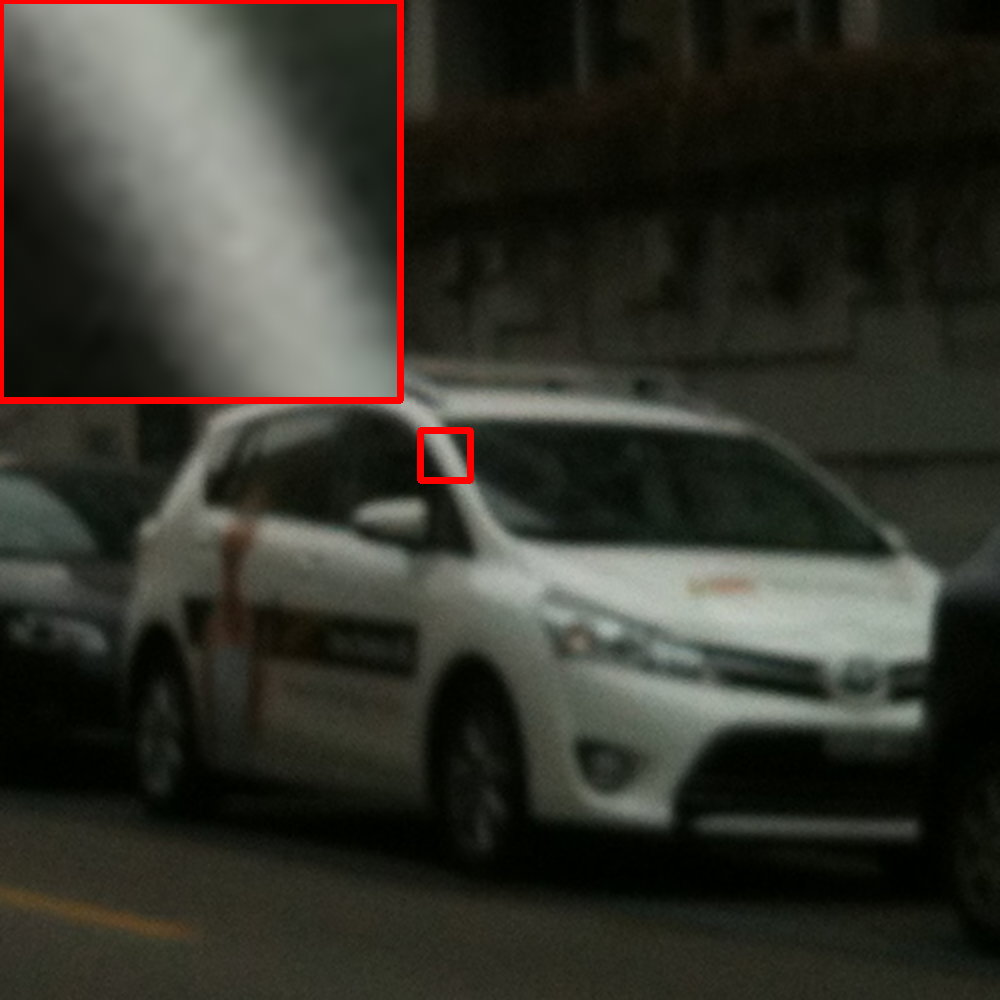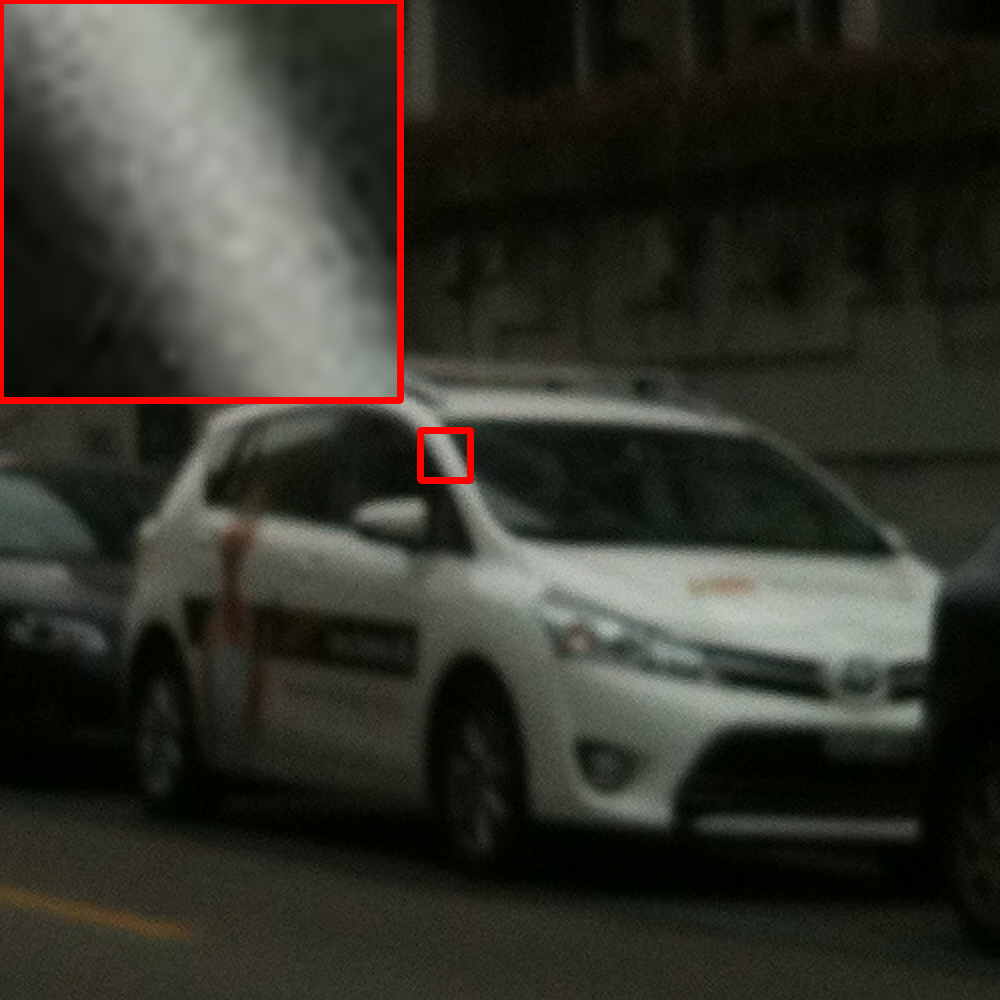


EDSR[1]
DBPN[2]
KMSR
Kernel Modeling Super-Resolution on Real Low-Resolution Images
Ruofan Zhou Sabine Süsstrunk
Image and Visual Representation Lab
École Polytechnique Fédérale de Lausanne
- Supplementary Material -
project page
In Section 4.5 in the paper, we present the results of our psychovisual experiment. Here, we describe the details of that qualitative testing.
50 images were randomly selected from the DPED[3] dataset. We perform the experiment as a 3 Alternative-Forced-Choice test (3-AFC) using a crowd sourcing website (www.clickworker.com). For each image, the observer was shown three SR results: our proposed KMSR, EDSR [1], and DBPN [2]. A zoom window allowed the observers to enlarge details of the images. The methods' names were hidden and the order is randomly shuffled. The observers were asked to select "the clearest and sharpest" image. Here are some examples of the images are shown in the experiment. The experiment website can be access through: https://ivrlwww.epfl.ch/ruofan/exp/index.html
We collected 35 votes for each of the 50 images. The table below shows the raw number of votes for each method. We also summarize the number of preferences in the table. Because guessing will lead to a percentage of preference equal to the reciprocal of the number of alternatives, the level at which the threshold is defined is adjusted for chance. Thus, for a 3-AFC experiment, the threshold is defined as 67%. In the following table, we thus show the number of preferences for each method, i.e., the number of images that >67% of the observers prefer the SR results from one method.
EDSR |
DBPN |
KMSR |
|
Number of preferences |
2/50 |
0/50 |
44/50 |
Raw Votes |
119/1750 |
26/1750 |
1605/1750 |
For 44 out of 50 images, the SR results from our proposed KMSR are preferred, which shows that KMSR also qualitatively outperform the other SR methods. Some examples of the super-resolution results are shown on this page.
Below, we show one of the two examples where the observers preferred EDSR over KMSR. Note that this image is out of focus to start with.
 |
 |
 |
|---|---|---|
EDSR[1] |
DBPN[2] |
KMSR |
Reference:
[1] Lim Bee, Son Sanghyun, Kim Heewon, Nah Seungjun. Lee Kyoung Mu. "Enhanced Deep Residual Networks for Single Image Super-Resolution", in IEEE Conference on Computer Vision and Pattern Recognition (CVPR) Workshops, 2017
[2] Haris Muhammad, Shakhnarovich Greg, Ukita Norimichi. "Deep Back-Projection Networks for Super-Resolution", in IEEE Conference on Computer Vision and Pattern Recognition (CVPR), 2018
[3] Andrey Ignatov, Nikolay Kobyshev, Radu Timofte, Kenneth Vanhoey and Luc Van Gool. "DSLR-Quality Photos on Mobile Devices with Deep Convolutional Networks", in IEEE International Conference on Computer Vision (ICCV), 2017